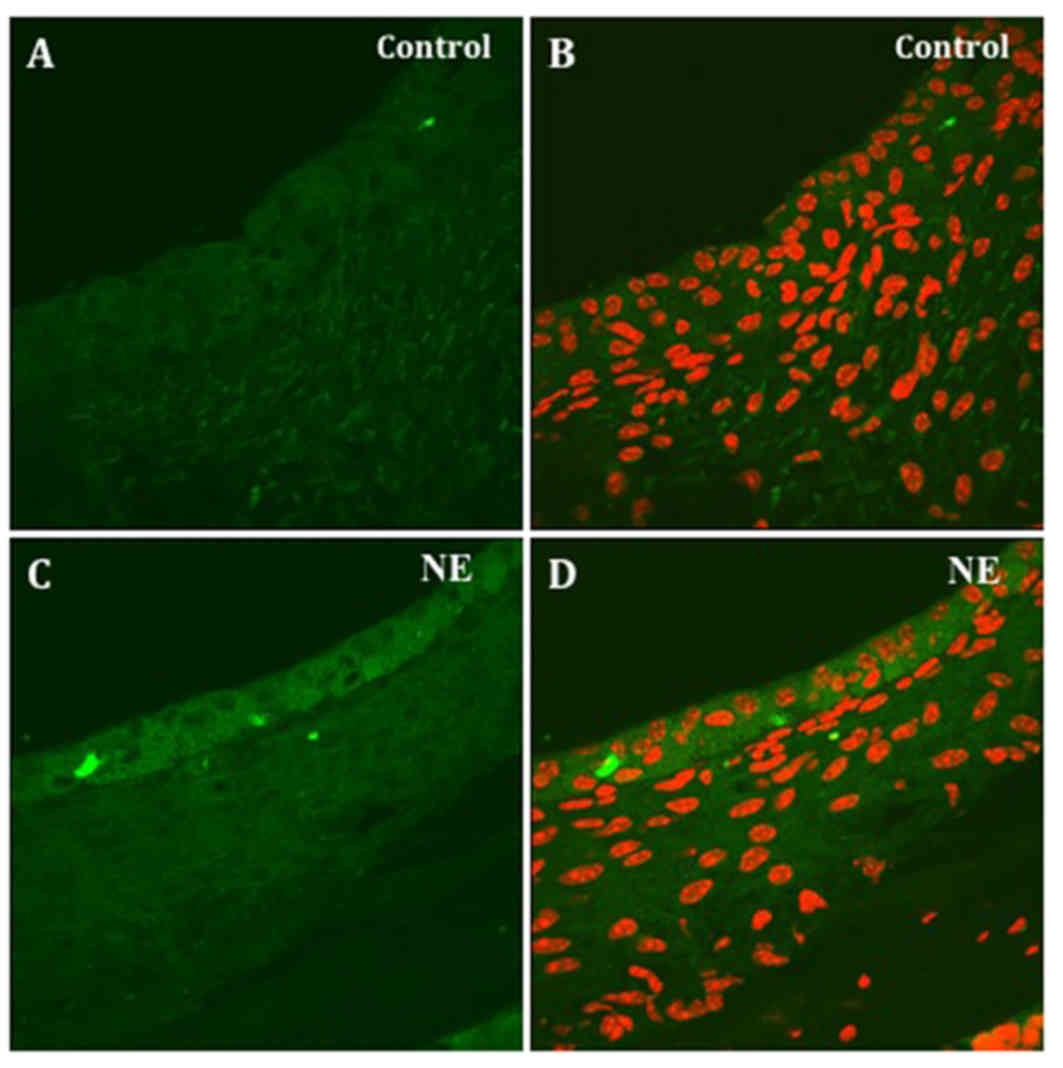Distribution and change of peroxynitrite in the guinea pig cochlea following noise exposure
- Authors:
- Published online on: June 1, 2018 https://doi.org/10.3892/br.2018.1107
- Pages: 135-141
Metrics: Total
Views: 0 (Spandidos Publications: | PMC Statistics: )
Total PDF Downloads: 0 (Spandidos Publications: | PMC Statistics: )
Abstract
Nitric oxide (NO)-mediated pathology depends on the formation of reactive intermediates, such as the peroxynitrite (ONOO-). ONOO- can nitrate free tyrosine and tyrosine residues of proteins. Therefore, increases in tyrosine nitration reflect the amount of ONOO- produced by oxidative stress. The distribution of 3‑nitrotyrosine (3‑NT), an ONOO- marker, in the organ of corti and the cochlear lateral wall tissue from the guinea pig were examined using fluorescence immunohistochemistry. The immunoactivity of 3‑NT in the normal guinea pig was compared with animals exposed to 122dBA broadband noise, 4 h/day, for 2 consecutive days. In the normal animals, 3‑NT immunoreactivity was found in the outer hair cells (OHCs), inner hair cells (IHCs), pillar cells (PCs), spiral ganglion cells (SPCs) and the marginal cells of stria vascularis in the lateral wall. Sound exposure increased the 3‑NT signal in all of the cells and resulted in extensive outer hair cell loss. A quantitative analysis of the 3‑NT change in OHCs and marginal cells of lateral wall showed that immunolabeling was significant (P<0.01, n=10) in the noise exposure group compared with that of the control group. Anti‑3‑NT and propidium iodide double labeling showed that 3‑NT was distributed mainly in the apical end of OHCs. In addition, 3‑NT was distributed outside of the nucleus of the OHCs and marginal cells. In conclusion, the data indicate that noise exposure leads to a significant production of ONOO- in the cochlear lateral wall and organ of corti. This is consistent with the known increase of NO production by loud sound stress and suggests that NO-derived free radicals participate in the cochlear pathophysiology of noise‑induced hearing loss.














